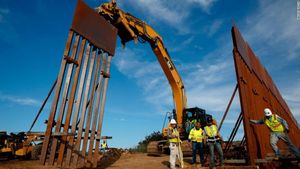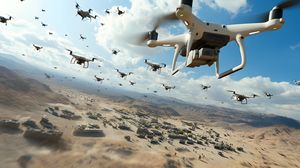Boeing's Starliner mission is shaping up to be more eventful than many had anticipated, with two NASA astronauts extending their stay on the International Space Station (ISS) as engineering challenges persist. Initially scheduled for just eight days, Barry "Butch" Wilmore and Sunita "Suni" Williams have found themselves onboard for over two months and could remain until February 2025.
The duo embarked on their space odyssey on June 5, 2024, during the ambitious Crew Flight Test meant to gauge Starliner's capabilities. Trouble struck when the spacecraft experienced thruster malfunctions triggered by overlapping helium leaks, jeopardizing their scheduled return.
NASA officials have announced they are weighing the possibility of using SpaceX’s Dragon capsule to facilitate the astronauts’ return. This option could require the astronauts to stay on the ISS for another six months.
Ken Bowersox, NASA's associate administrator for space operations, emphasized the importance of using their extended time wisely. “We’ve got time available before we bring Starliner home,” he stated, as engineers work to resolve the issues plaguing the spacecraft.
Although concerns linger about food and water supplies, Bowersox reassured the public, highlighting their current well-being. Wilmore and Williams, both seasoned astronauts, have been actively involved with research and maintenance aboard the ISS.
On August 14, NASA held a press briefing to discuss the next steps after some engineering setbacks with the Starliner. Reports indicated lifting operations for returning the astronauts would be finalized by the end of the month.
Should the Starliner remain unfit for the return mission, the crew would transition to the upcoming SpaceX Crew-9 mission. NASA said two open seats are available for Wilmore and Williams on the Crew Dragon, expected to launch on September 24, 2024.
One complication remains: the astronauts’ spacesuits are not interchangeable with those of SpaceX. This mismatch means they cannot utilize Crew-9’s spacecraft for immediate return, should the craft be operational.
Despite these glitches, the astronauts seem to be adapting to life aboard the ISS. Williams previously mentioned they were handling the unexpected situation with good humor, sharing, “I’m not complaining, Butch isn’t complaining, we’re here for a couple of extra weeks.”
Wilmore doggedly reiterated, “That mantra you’ve heard, failure is not an option. And that's why we're staying here now.” This mindset highlights their focus on the mission rather than the lengthy duration of their stay.
The Starliner spacecraft successfully docked at the ISS on June 6, just one day after launch. Engineers continue to assess the problems, especially concerning the spacecraft’s propulsion system.
On the ground, Boeing has faced scrutiny over the string of delays and complications since the launch. Originally, the Starliner’s first crewed mission planned for May had been postponed multiple times due to technical issues.
A series of helium leaks and thruster failures have raised significant concerns among engineers and officials alike. Although the capsule maintained docking with the ISS, its earlier return flights were postponed repeatedly.
A supply delivery to the ISS on August 6 included clothes and personal items for the astronauts. Nonetheless, the uncertainty surrounding Starliner’s operational status has left many on edge.
Nasa has made it clear the astronauts aren’t stranded but rather adapting to their extended mission. They have the capacity to support additional crew members and are fully prepared for the duration.
The sleeping arrangements at the ISS can be unconventional. Marked “Crew Quarters,” each provides approximately 74 cubic feet, allowing astronauts limited personal space with laptops and sleeping bags.
For this mission, more spacious accommodations were necessary. When handovers occur, astronauts have also utilized temporary campout spots within the ISS for sleep.
Despite the cramped quarters, NASA highlighted the importance of rest and exercise, both critical for maintaining astronaut health amid reduced gravity. Astronauts adapt to this lifestyle, often sleeping soundly attached to special bags without the standard comforts of Earth.
NASA astronauts typically aim for about eight hours of sleep daily, complemented with two hours set aside for exercise. This routine helps counteract muscle and bone loss associated with prolonged weightlessness.
While the future of the Starliner project hangs uncertain, it's apparent both Wilmore and Williams are determined to make the most of their time. Everyone continues to hope for both their safe return and the resolution of the spacecraft’s issues.
The situation remains fluid as the space community watches closely for NASA's decision-making processes. Soon, all eyes will be on whether this legendary duo will soar back to Earth or continue making historic strides aboard the ISS.



